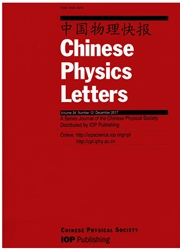

 中文摘要:
中文摘要:
离子光子排放显微镜学(IPEM ) 是新导致离子的排放显微镜学。它与高精力和在一件样品上侵犯的低 fluence 率采用一根宽广离子横梁。一个单个离子的位置被一个光系统与联合的客观透镜,棱柱,显微镜试管和充电检测设备(电荷耦合器件) 。与 Ag 离子做的一部薄 ZnS 电影被用作光材料。在照耀的 Cl 离子创造的 ZnS (Ag ) 电影的光子的产生效率和传播效率是计算的。一个单个 Cl 离子光显微镜的图象被高量效率电荷耦合器件观察。在这个 IPEM 系统给的一个单个 Cl 离子的分辨率是 6 m。影响分辨率的几个因素被讨论。一根硅二极管被用来收集事件离子引起的电的信号。光图象和电子信号的有效、意外的巧合被说明。单个事件效果的一张二维的地图根据有效巧合的数据被抽出。
 英文摘要:
英文摘要:
Ion photon emission microscopy (IPEM) is a new ion-induced emission microscopy. It employs a broad ion beam with high energy and low fluence rate impinging on a sample. The position of a single ion is detected by an optical system with objective lens, prism, microscope tube and charge coupled device (CCD). A thin ZnS film doped with Ag ions is used as a luminescent material. Generation efficiency and transmission efficiency of photons in the ZnS(Ag) film created by irradiated Cl ions are calculated. A single Cl ion optical microscopic image is observed by high quantum efficiency CCD. The resolution of a single Cl ion given in this IPEM system is 6μm. Several factors influencing the resolution are discussed. A silicon diode is used to collect the electrical signals caused by the incident ions. Effective and accidental coincidence of optical images and electronic signals are illustrated. A two-dimensional map of single event effect is drawn out according to the data of effective coincidence.
 同期刊论文项目
同期刊论文项目
 同项目期刊论文
同项目期刊论文
 期刊信息
期刊信息
